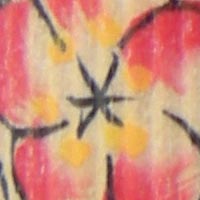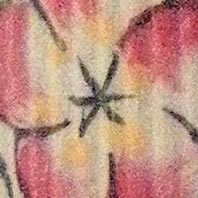Nikon Coolpix P50 Review
Review Date: December 17th 2007
Author: Gavin Stoker
Leave a comment about this Review
|
Image Quality
All of the sample images in this Review were taken using the 8 megapixel JPEG setting, which gives an average image size of around 2.5Mb.
Noise
There are 6 ISO settings available on the Nikon Coolpix P50 which you can select at any time if the camera is in the normal shooting mode. Noise is visible from ISO 400 upwards, and images shot at ISO 1600 or 2000 look appallingly noisy when viewed on the camera's rear LCD. Download them to the desktop and the results aren't half as bad – grain is visible yes, but results at both settings would be usable at a push. Here are some 100% crops which show the noise levels for each ISO setting:
ISO 64 (100% Crop) |
ISO 100 (100% Crop) |
 |
 |
ISO 200 (100% Crop) |
ISO 400 (100% Crop) |
 |
 |
ISO 800 (100% Crop) |
ISO 1600 (100% Crop) |
 |
 |
ISO 2000 (100% Crop) |
|
 |
|
Sharpening
Here are two 100% crops which have been Saved as Web - Quality 50 in Photoshop. The right-hand image has had some sharpening applied in Photoshop. The out-of-the camera images are soft at the default sharpening setting, and benefit from some further sharpening in a program like Adobe Photoshop. You can also change the in-camera sharpening levels if you don't like the default results.
Original
(100% Crop)
|
Sharpened (100% Crop) |
 |
 |
 |
 |
Chromatic Aberrations
The Nikon Coolpix P50 handled chromatic aberrations very well, with limited purple fringing evident only in areas of high contrast, especially at the edges of the frame, as shown in the examples below.
|
Example
1 (100% Crop)
|
 |
Macro
The Nikon Coolpix P50 offers a Macro setting that allows you to focus on a subject that is 5cms away from the camera. The first image shows how close you can get to the subject in Macro mode (in this case a compact flash card). The second image is a 100% crop.
|
Macro Shot |
100% Crop |
 |
 |
Flash
The flash settings on the Nikon Coolpix P50 are Auto, Red-Eye reduction, Off, On, and Slow sync. These shots of a white coloured wall were taken at a distance of 1.5m.
|
Flash Off - Wide Angle (28mm) |
Auto Flash - Wide Angle (28mm) |
 |
 |
|
Flash Off - Telephoto (102mm) |
Auto Flash - Telephoto (102mm) |
 |
 |
And here are some portrait shots. The Auto setting caused a tiny amount of red-eye, which the Red-eye reduction mode almost completely removed.
|
Auto |
Auto (100% Crop) |
 |
 |
|
Red-eye reduction |
Red-eye reduction (100% Crop) |
 |
 |
Night Shot
The Nikon Coolpix P50's maximum shutter speed is 4 seconds in the Night scene mode, which is fairly disappointing if you're seriously interested in night photography. The shot below was taken using a shutter speed of 0.3 seconds, aperture of f/2.9 at ISO 800. I've included a 100% crop of the image to show what the quality is like.
|
Night Shot |
Night Shot (100% Crop) |
 |
 |
Overall Image Quality
With the Nikon Coolpix P50 not excelling in one particular area of image quality – but rather being, under most conditions, a reliable performer – the camera comes across as a jack of all trades. With multi segment metering selected, even exposures are the order of the day, with a pleasing amount of foreground and background detail maintained. Colour is also well handled, with reds, greens and blues appearing especially vivid when left to the camera's default settings. With good enough light conditions there's also plenty of detail on offer, so the Nikon Coolpix P50 is already looking like a very fairly priced option for a general purpose snapshot. Low light conditions without the aid of flash prove more testing of course. Though images shot at ISO1600 or 2000 look appallingly noisy when viewed on the camera's rear LCD, download them to the desktop and the results aren't half as bad – grain is visible yes, but results at both settings would be usable at a push. Pixel fringing is noticeable only under close inspection, meaning that it's reasonably well disguised. As the camera is so light we expected the odd instance of camera shake when shooting in low light conditions – or even on overcast days – at extreme telephoto, and so it proved. Electronic VR appeared only to introduce noise under such circumstances – so we ended up with both blurred and noisy images – not ideal. Stick to shooting with plenty of light around and you won't be disappointed.
|
![]() PhotographyBLOG
is a member of the DIWA
organisation. Our test results for the Nikon Coolpix P50 have been submitted to DIWA
for comparison with test results for different samples of
the same camera model supplied by other DIWA
member sites.
PhotographyBLOG
is a member of the DIWA
organisation. Our test results for the Nikon Coolpix P50 have been submitted to DIWA
for comparison with test results for different samples of
the same camera model supplied by other DIWA
member sites.
